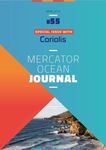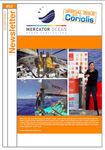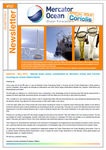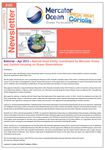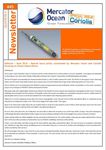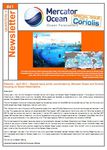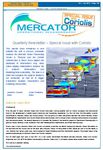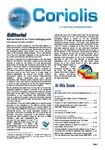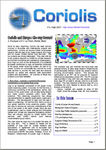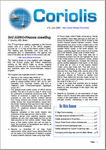Table of contents
Cancouët et al. present the Euro-Argo MOCCA project (Monitoring the Ocean and Climate Change with Argo) scheduled for a 5-year period (2015-2020). Its goal is to procure and deploy 150 European Argo floats, along with corresponding data collection, analysis, management, processing and dissemination in the years up to 2020 over the operating lifetime of the floats.These floats will complement the Euro-Argo countries contribution to the international network.
Pouliquen et al. next present the AtlantOS (Atlantic Ocean Observing System) project scheduled for a 4 years period which objective is to obtain an international, more sustainable, efficient, integrated, and fit-for-purpose observing system in the Atlantic Ocean and in particular the activities related to data management and interoperability.
Next paper by Thierry et al. presents the work done to share dissolved oxygen data processing methods and converge towards common methods. Dissolved oxygen concentration is an important parameter in the context of climate change and the monitoring of marine ecosystems.
Quentin et al. then describe the progress in France towards the development of high frequency ocean radars in order to observe coastal areas. High Frequency Radars are shorebased remote-sensing instruments to accurately monitor the ocean surface current field and transport, over large areas (typically 60 X 60 km), in real time and at high spatial (3-5 km) and temporal resolutions (10 min-1 hour).
The following paper by Gourrion et al. presents a new statistical approach for in situ temperature and salinity observation quality control developed within the In Situ Thematic Assembly Center of the Copernicus Marine and Environmental Monitoring Service. This new approach based on direct inference of local extreme values improves product quality assessment and reduce subjective decisions by human operators.
Maze et al. present a data mining statistical method called «Profile Classification Model». When applied to in situ data, it allows sorting out all in situ profiles into a
small number of classes, each capturing the diversity of all possible vertical structures. Such method is for example useful for observation data centers to better select reference data for quality control procedures. It is also useful for scientists to better comprehend ocean processes and assess the realism of a numerical model output.
V. Thierry et al. and L.Coppola et al. tell us about the implementation of an Argo-O2 array in respectively the
North-Atlantic Ocean and the Mediterranean Sea.

